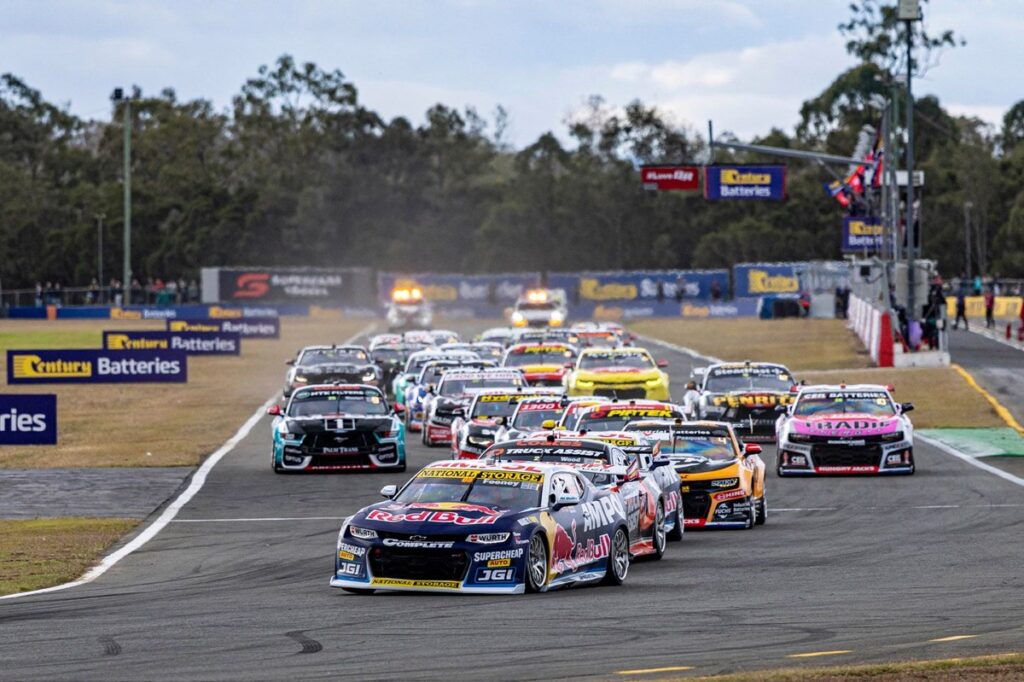There is much talk about Playoffs or Finals formats in motor racing at present as the NASCAR and Supercars seasons move towards their climax.
For the first time, the 24 regular Supercars drivers will be whittled down to 10 at the conclusion of the weekend’s Bathurst 1000, to be in title contention over the final three rounds of the championship.
In the USA, NASCAR’s Playoffs are well under way amid reports that the format, which has been in place since 2004 (when it was the Chase for the Championship) might not be ideal for the fans. Joey Logano received some criticism for his 2024 title, when he was ninth in the points in the qualifying part of the season (with just four top five finishes in 26 races) before a late surge carried him to the title for the third time.
This season, the inclusion of Shane van Gisbergen as a Playoffs driver has also drawn comment. The rookie has dominated on the road and street courses, and his four wins assured him a place in the Playoffs as the sixth seed, a full 18 places above his points position coming into the last of the ‘regular season’ races. But the rookie of the year is still learning his craft on the ovals and, as such, some fans have expressed the opinion that he did not deserve to be in Playoffs contention, even if he was eliminated from that relatively early.
Supercars has avoided that controversy by making an important change to the NASCAR system; by not seeding race winners straight in the Finals. That looked like sound thinking following the first nine races of the season, after six different drivers greeted the chequered flag first. But in the 17 races since then only two other full-time drivers have won a race, so not adopting the NASCAR win-and-you’re-in model appears to be a good call.
The other side of that coin in that apart from Triple Eight’s Broc Feeney, who got a ticket to the Finals by winning the Sprint Cup (based on the first eight rounds of the 13-round championship), five other drivers go to Bathurst assured of making the top 10 regardless of what happens in the race; Matt Payne (Grove Racing), Will Brown (T8), Cam Waters (Tickford Racing), Chaz Mostert (Walkinshaw Andretti United) and Brodie Kostecki (Dick Johnson Racing). Such has been the spread in results this season that even with 300 points on the table for a Bathurst win, those top six are in an impregnable position.
Start action
Photo by: Edge Photographics
Not so from there down. The first driver to be out of Finals contention is the 18th-placed David Reynolds. Ironically, the Team 18 Chevrolet driver is a former Bathurst winner from 2017 and, but for dehydration-induced cramps, he would have won again in 2018. His co-driver is Lee Holdsworth, who won in 2021. Even taking into account Reynolds’s inconsistent form, it would not be a huge surprise to see that pair secure a front-row start and a race win. But the current system would not seed Reynolds into the Finals.
So the remaining berths will be filled by four of 11 drivers; Anton De Pasquale (Team 18), Ryan Wood (Walkinshaw Andretti United), Thomas Randle (Tickford), Kai Allen (Dick Johnson Racing), Andre Heimgartner and Bryce Fullwood (Brad Jones Racing), Nick Percat and Cam Hill (Matt Stone Racing), James Golding (PremiAir Racing), and Jack Le Brocq and Cooper Murray (Erebus Motorsport).
There is always much to watch at the Bathurst 1000, and keeping an eye on who makes the cut will make the final 50 laps of the 161-lap race particularly fascinating.
But had Supercars adopted NASCAR’s win-and-you’re-in model, those drivers would have been fighting for just two places – and one of those may have been taken by an otherwise non-qualifying driver taking his first win of 2025 at Bathurst.
As much discussion as Supercars’ Finals format has attracted, even if some fans think it is not a benefit, it could have been much worse.
We want to hear from you!
Let us know what you would like to see from us in the future.
Take our survey
– The Autosport.com Team
Read the full article here

